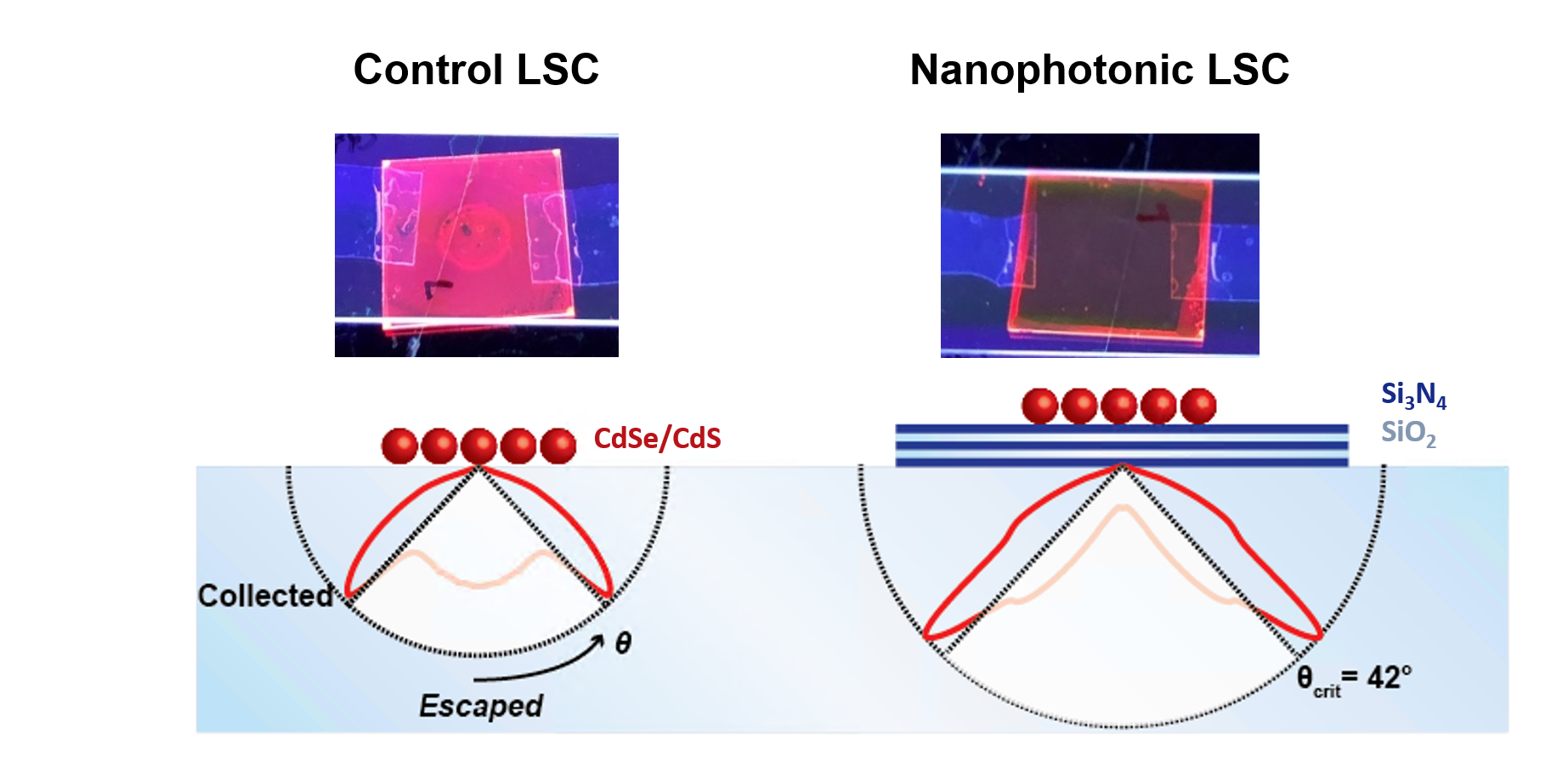Although terrestrial sun power vastly exceeds both our annual power consumption and the total power reserve from all other known energy resources, photovoltaics only account for 2% of worldwide power generation. Transformative solar technologies with high efficiencies and low costs are required to make a more meaningful contribution and overcome the inherent capacity challenge of solar energy. Luminescent solar concentrators (LSCs) are a promising candidate â their flat, rectangular form factor and solution-processed materials (quantum dots or dyes) are more attractive than traditional, bulky concentrators that require high precision manufacturing. LSCâs function by downshifting incident sunlight with luminophores encapsulated in a planar dielectric sheet and guiding the luminescence to the edges. While LSCs should theoretically achieve extremely high concentration, fabricated LSCs have only achieved 30x due to substantial escape losses from isotropic emission of the luminophores [1], [2]. LSCs with high (>100x) concentrations could be possible if the local optical density of states could be modified to guide the luminescence only into total internal reflection modes.
Here we discuss an advanced luminescent concentrator design that takes advantage of the unique nanophotonic properties of quantum dots to create anisotropic emission profiles. By optimizing the local optical environment (O(100 â 1000 nm)) of the LSC luminophores, the angular emission of these luminiophores is strongly modified to favor trapped modes, resulting in both enhanced photoluminescence collection and reduced reabsorption losses. High quantum yield (QY = 98%) CdSe/CdS quantum dots were deposited onto an optimized dielectric stack of alternating high index (Si3N4, 210 nm) and low index (SiO2, 100 nm) layers. This dielectric stack transformed the emission pattern of the quantum dots from isotropic into highly directional, oblique angles that guide the light to the collection edges. Through back focal plane imaging, we characterized the angular emission profiles of the quantum dots with and without the dielectric stacks. The attached figure shows pictures and angular emission profiles of a control LSC (without a dielectric stack) and the nanophotonic LSC. Unlike the control LSC, the vast majority of the photoluminescence from the nanophotonic LSC is outside of the critical angle of the substrate â this is why one can see red light emitted from all faces of the lossy control LSC and red light only emitted at the collection edges of the nanophotonic LSC. We demonstrated a 40% increase in photoluminescence trapping of the advanced design over traditional LSC slabs. Additionally, we used finite difference time domain (FDTD) simulations to show that the advanced LSC design can reduce unwanted reabsorption of photoluminescence. This was experimentally corroborated by photoluminescence spatial maps: reabsorption events cause the photoluminescence to redshift with increasing distance (i.e the inner filter effect). The nanophotonic LSC design showed a significantly smaller redshift (50% reduction) compared to the sample without the dielectric stack. Through this work, we created a design that represents a significant departure from current solar cell manufacturing techniques and shows potential for increased renewable energy generation.
[1] E. Yablonovitch, âThermodynamics of the fluorescent planar concentrator,â J. Opt. Soc. Am., vol. 70, no. 11, p. 1362, 1980, doi: 10.1364/JOSA.70.001362.
[2] N. D. Bronstein et al., âQuantum Dot Luminescent Concentrator Cavity Exhibiting 30-fold Concentration,â ACS Photonics, vol. 2, no. 11, pp. 1576â1583, 2015, doi: 10.1021/acsphotonics.5b00334.


